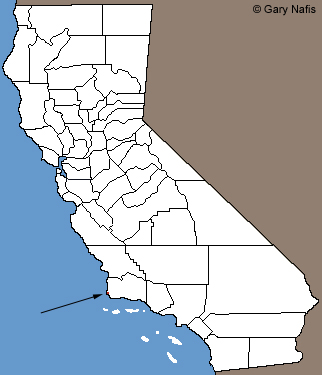|
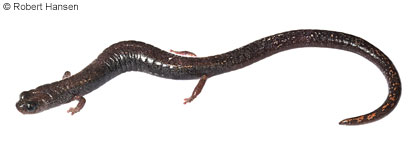 |
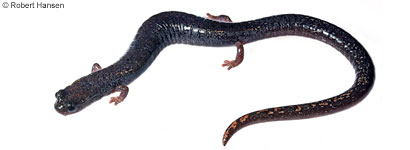 |
| Adult, Santa Barbara County © Robert W. Hansen |
Adult, Santa Barbara County © Robert W. Hansen |
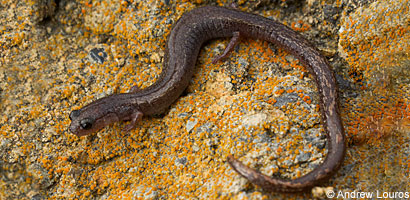 |
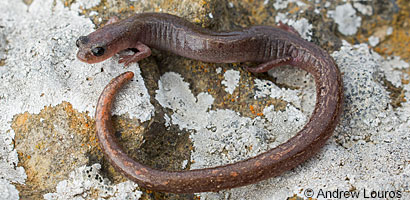 |
| Adult, Santa Barbara County © Andrew Louros |
Adult, Santa Barbara County © Andrew Louros |
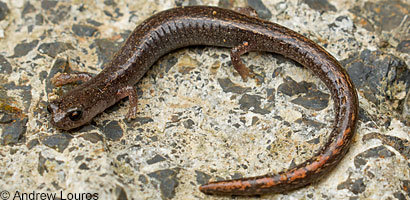 |
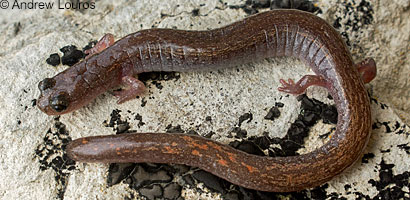 |
| Adult, Santa Barbara County © Andrew Louros |
Adult, Santa Barbara County © Andrew Louros |
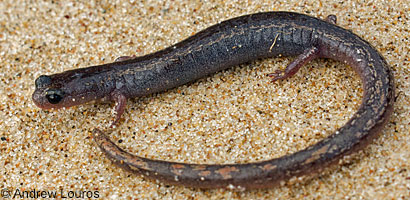 |
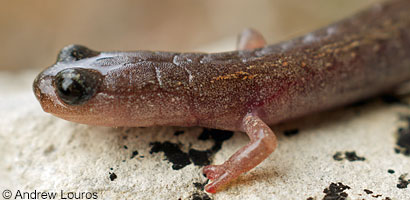 |
| Adult, Santa Barbara County © Andrew Louros |
Adult, Santa Barbara County © Andrew Louros |
| |
| Habitat |
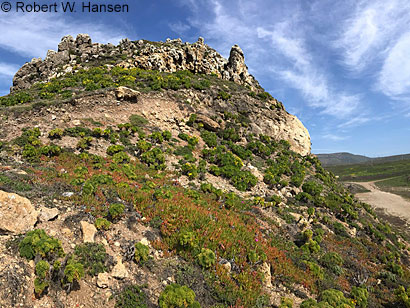 |
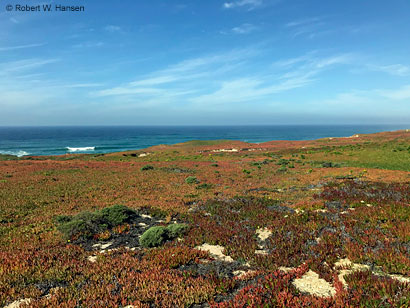 |
| Habitat, Santa Barbara County © Robert W. Hansen |
Habitat, Santa Barbara County © Robert W. Hansen |
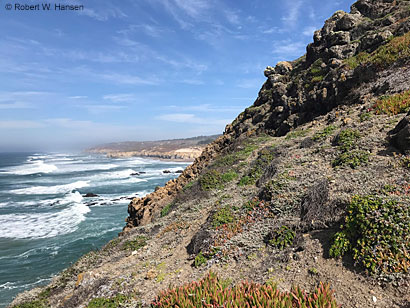 |
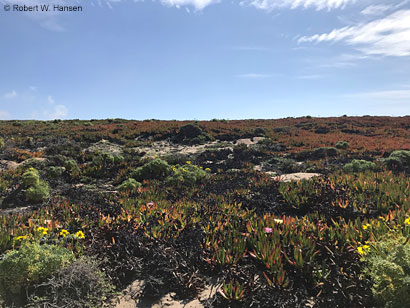 |
| Habitat, Santa Barbara County © Robert W. Hansen |
Habitat, Santa Barbara County © Robert W. Hansen |
More pictures of this species and pictures of its habitat should be available to view online at
Novataxa
&
BioOne
|
| |
|
|
|
| Short Video |
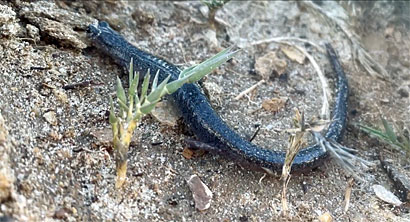 |
|
|
Watch a short YouTube video © Chris Evelyn with these comments:
"Arguello Slender Salamander (Batrachoseps wakei) returning to its rock refuge. This salamander has one of the smallest ranges of any species on the planet. It is only known from a few sites near the sea cliffs and neighboring coastal sage scrub habitat along the Pacific Ocean in Santa Barbara County in California. Dr. Christopher J. Evelyn of the Cheadle Center at UC Santa Barbara is working with a team of biologists lead by Dr. John Labonte to better understand this species' ecology in order to better inform conservation and management for Santa Barbara's endemic salamander." |
|
|
| |
|
|
|
Description |
| |
| Size |
The largest male measured 65.0 mm (2.6 in.) snout to vent length.
The largest female measured 67.6 mm (2.7 in.) snout to vent length.
(Sweet & Jockusch, 2021)
|
| Appearance |
A large, moderately robust species of Slender Salamander with a rounded head that is not distinct from the neck and eyes that extend beyond the outline of the head when viewed from above.
Apparently there is no sexual dimorphism.
(Sweet & Jockusch, 2021)
Slender Salamanders have four toes on the front and hind feet.
(Other salamanders found in California have five toes on the hind feet.)
|
| Color and Pattern |
Dorsal color is light brown overlaid with tan to dull golden iridophores distributed as longitudinal streaks that appear to form irregular pale dorsolateral bands.
Ventral surfaces are light tan.
A faint orange cast on the tail that may become enlarged and cover the entire dorsum of the distal third of the tail in large adults.
Apparently there is no sexual dimorphism.
Juveniles
"Small juvenile B. wakei were uniformly dark brown dorsally and tan ventrally, without tan dorsal vermiculations or orange iridophore patches, but with dense, punctate white guanophores on all lateral surfaces."
(Sweet & Jockusch, 2021)
|
| Sympatric Slender Salamanders |
Not yet found to be sympatric with any other species, but B. nigriventris has been found only about 400 m (1,312 ft.) from the nearest location where B. wakei has been found, so sympatry would not be surprising where their habitats meet.
B. wakei is separated from the nearest mainland Batrachoseps species in the Pacificus group by 84 km (52 miles) to the north and 202 km (125 miles) to the south, with only B. nigriventris found in the regions in between.
(Sweet & Jockusch, 2021)
|
| Comparison with Some Similar Species |
Genetically most closely related to B. major and B. pacificus, from which it differs in having a smaller head with more protruding eyes, fewer melanophores on the throat and chest, and in often having extensive patches or orange pigment on the end of the tail. It also has a longer tail than B. pacificus and proportionally longer limbs, larger feet, and a shorter tail than B. major.
Larger as a whole than B. gavilanensis, B. incognitus, B. luciae, and B. minor, with a larger head, longer limbs, wider feet, and a shorter tail. Also lighter in color than these species dorsally and ventrally, with the others having a dark gray or black venter with visible white guanophores.
(Sweet & Jockusch, 2021)
|
| Life History and Behavior |
A member of family Plethodontidae, the Plethodontid or Lungless Salamanders.
Plethodontid salamanders do not breathe through lungs. They conduct respiration through their skin and the tissues lining their mouth. This requires them to live in damp environments on land and to move about on the ground only during times of high humidity. (Plethodontid salamanders native to California do not inhabit streams or bodies of water but they are capable of surviving for a short time if they fall into water.)
Plethodontid salamanders are also distinguished by their nasolabial grooves, which are vertical slits between the nostrils and upper lip that are lined with glands associated with chemoreception.
All Plethodontid Salamanders native to California lay eggs in moist places on land.
The young develop in the egg and hatch directly into a tiny terrestrial salamander with the same body form as an adult.
(They do not hatch in the water and begin their lives as tiny swimming larvae breathing through gills like some other types of salamanders.)
|
| Activity |
The behavior of this species has not been described.
It is assumed that like other Slender Salamanders, it is active on rainy or wet nights when temperatures are moderate, fall through spring, retreating underground when the soil dries or when air temperature drops to near freezing.
It has been found under surface debris between January and May, though this might only indicate the time of year that people were searching for it and not the time of year it is active above ground.
|
| Defense |
Not described.
Other species ofSlender salamanders use several defense tactics, including:
- Coiling and remaining still, relying on cryptic coloring to avoid detection.
- Uncoiling quickly and springing away repeatedly bouncing over the ground, then remaining still again to avoid detection.
- Detaching the tail, which wriggles on the ground to distract a predator from the salamander long enough for it to escape.
(After its tail is detached or severed, the salamander will grow a new tail.) |
| Diet and Feeding |
Not described.
Other species of Slender Salamanders eat a variety of small invertebrates which they catch by sit-and-wait predation using a projectile tongue to catch prey. |
| Reproduction |
Not described.
Reproduction of other Slender Salamanders is terrestrial, with females laying eggs in moist places underground.
|
| Young |
The young of all other Slender Salamanders develop completely in the egg and hatch fully formed.
|
| Habitat |
As far as is known, this species only inhabits a narrow marine terrace containing relatively thick low vegetation in a dark sandy loam soil, in an area of enhanced offshore winds, fog drip, and rainfall. The loam soil holds burrows unlike the sandier soil on terraces nearby. The coastal area to the north of B. wakei habitat is mostly dune fields and the area to the south experiences much less fog drip and rainfall, which may limit the usable habitat for the species to the small area in which it has so far been found.
(Sweet & Jockusch, 2021)
|
| Geographical Range |
Endemic to California.
Found only in a very small area on the coast of Santa Barbara County on a narrow marine terrace centered on Point Arguello about 400 m wide by 4 km long (1,312 ft. wide by 2.5 miles long).
Access to the entire area where the species has been found is on Vandenburgh Space Force Base where access is restricted and completely off-limits to the public.
Very likely a relict species with a very small range.
"Believed to reflect a biogeographic history in which the central coastal taxa were transported north separately on distinct pieces of land by tectonic activity (Yanev, 1980; Wake, 2006)."
(Sweet & Jockusch, 2021)
|
Elevation
So far, only found in locations between approximately 30 m and 53 m above sea level (98 to 174 ft).
(Sweet & Jockusch, 2021)
|
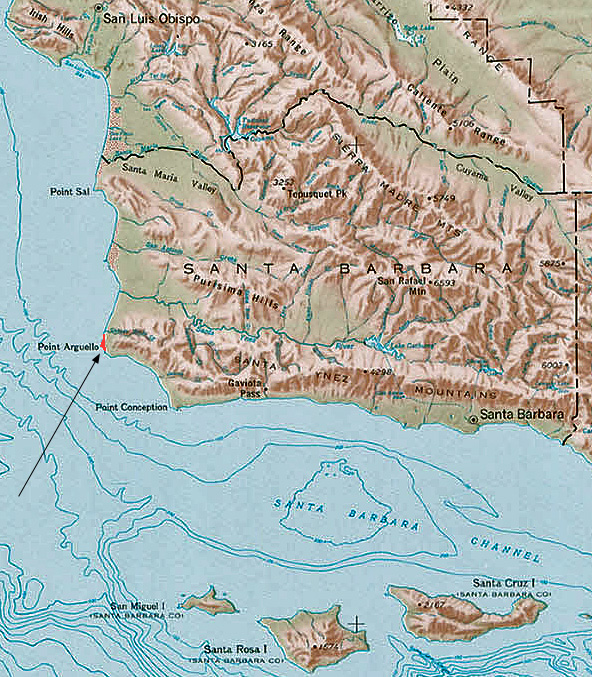 |
Map showing Santa Barbara County, California, including most of the Channel Islands,
with the approximate known range of B. wakei shown in red
|
| Notes on Taxonomy |
First discovered in May, 2006 on what is now Vandenberg Space Force Base in Santa Barbara County. A picture of one of the salamanders and more information about the original discovery can be found in an article by Mark Holmgren in the UCSB CCBER Newsletter Vol. 1, June 2006 page 10.
Batrachoseps wakei was formally described by Sweet & Jockush in 2021 after years of study and analysis determined that the geography, morphology, and molecular make-up of this salamander support its recognition as a new species.
The species is significantly different genetically from its closest relative B. minor, the nearest population of which is more than 90 kilometers away. It also varies significantly from similar nearby species B. pacificus and B. major.
"The geographic isolation from close relatives, tiny known range, and near absence of genetic diversity suggest that this lineage is an evolutionary relict."
(Sweet & Jockusch, 2021)
A part of the Pacificus group of Batrachoseps, (B. gabrieli, B. minor, B. major, B. incognitus, B. pacificus, B. luciae, and B. gavilanensis.)
Here's a Diagram of the Batrachoseps Complex showing the relationships between species that was made before B. wakei was described.
Alternate and Previous Names (Synonyms)
As part of the Pacificus group of Batrachoseps it would have been formerly called Batrachoseps pacificus.
|
| Conservation Issues (Conservation Status) |
The species has a very small range and lacks genetic diversity, which makes it vulnerable, but its habitat is inherently well-protected due to its restricted public access and ownership by "...the United States Space Force, the U.S. Coast Guard, and the Union Pacific Railroad Corporation and the governmental entities are expected to be supportive of management practices that aid in conservation of this species."
(Sweet & Jockusch, 2021)
This species was listed as Critically Imperiled by the 7/03/23 State of California Special Animals List.
|
|
| Taxonomy |
| Family |
Plethodontidae |
Lungless Salamanders |
Gray, 1850 |
| Genus |
Batrachoseps |
Slender Salamanders |
Bonaparte, 1841 |
Species
|
wakei |
Arguello Slender Salamander |
Sweet and Jockusch, 2021 |
|
Original Description |
Samuel S. Sweet and Elizabeth L. Jockusch. A New Relict Species of Slender Salamander (Plethodontidae: Batrachoseps) with a Tiny Range from Point Arguello, California. The American Society of Ichthyologists and Herpetologists. Ichthyology & Herpetology 109, No. 3, 2021, 836–850. 23 September 2021.
URL: https://doi.org/10.1643/h2020027
|
|
Meaning of the Scientific Name |
Batrachoseps - Greek - batrachos = amphibian, frog + seps = lizard — describes lizard-like appearance
from Scientific and Common Names of the Reptiles and Amphibians of North America - Explained © Ellin Beltz
wakei: Named in honor of herpetologist David Burton Wake.
|
|
Similar Neighboring Salamanders |
Batrachoseps minor
Batrachoseps nigriventris
Batrachoseps pacificus
Batrachoseps major
|
|
More Information and References |
** Samuel S. Sweet and Elizabeth L. Jockusch. A New Relict Species of Slender Salamander (Plethodontidae: Batrachoseps) with a Tiny Range from Point Arguello, California. The American Society of Ichthyologists and Herpetologists. Ichthyology & Herpetology 109, No. 3, 2021, 836–850. 23 September 2021.
https://bioone.org/journals/ichthyology-and-herpetology/volume-109/issue-3/h2020027/A-New-Relict-Species-of-Slender-Salamander-Plethodontidae--Batrachoseps/10.1643/h2020027.full
Amphibiaweb Description
|
|
|
The following conservation status listings for this animal are taken from the July 2025 State of California Special Animals List and the July 2025 Federally Listed Endangered and Threatened Animals of California list (unless indicated otherwise below.) Both lists are produced by multiple agencies every year, and sometimes more than once per year, so the conservation status listing information found below might not be from the most recent lists, but they don't change a great deal from year to year.. To make sure you are seeing the most recent listings, go to this California Department of Fish and Wildlife web page where you can search for and download both lists:
https://www.wildlife.ca.gov/Data/CNDDB/Plants-and-Animals.
A detailed explanation of the meaning of the status listing symbols can be found at the beginning of the two lists. For quick reference, I have included them on my Special Status Information page.
If no status is listed here, the animal is not included on either list. This most likely indicates that there are no serious conservation concerns for the animal. To find out more about an animal's status you can also go to the NatureServe and IUCN websites to check their rankings.
Check the current California Department of Fish and Wildlife sport fishing regulations to find out if this animal can be legally pursued and handled or collected with possession of a current fishing license. You can also look at the summary of the sport fishing regulations as they apply only to reptiles and amphibians that has been made for this website.
This species is still too new to be listed by some of the agencies shown below.
|
| Organization |
Status Listing |
Notes |
| NatureServe Global Ranking |
G1 |
Critically Imperiled |
| NatureServe State Ranking |
S1 |
Critically Imperiled
|
| U.S. Endangered Species Act (ESA) |
None |
|
| California Endangered Species Act (CESA) |
None |
|
| California Department of Fish and Wildlife |
None |
|
| Bureau of Land Management |
None |
|
| USDA Forest Service |
None |
|
| IUCN |
None |
|
|
|
